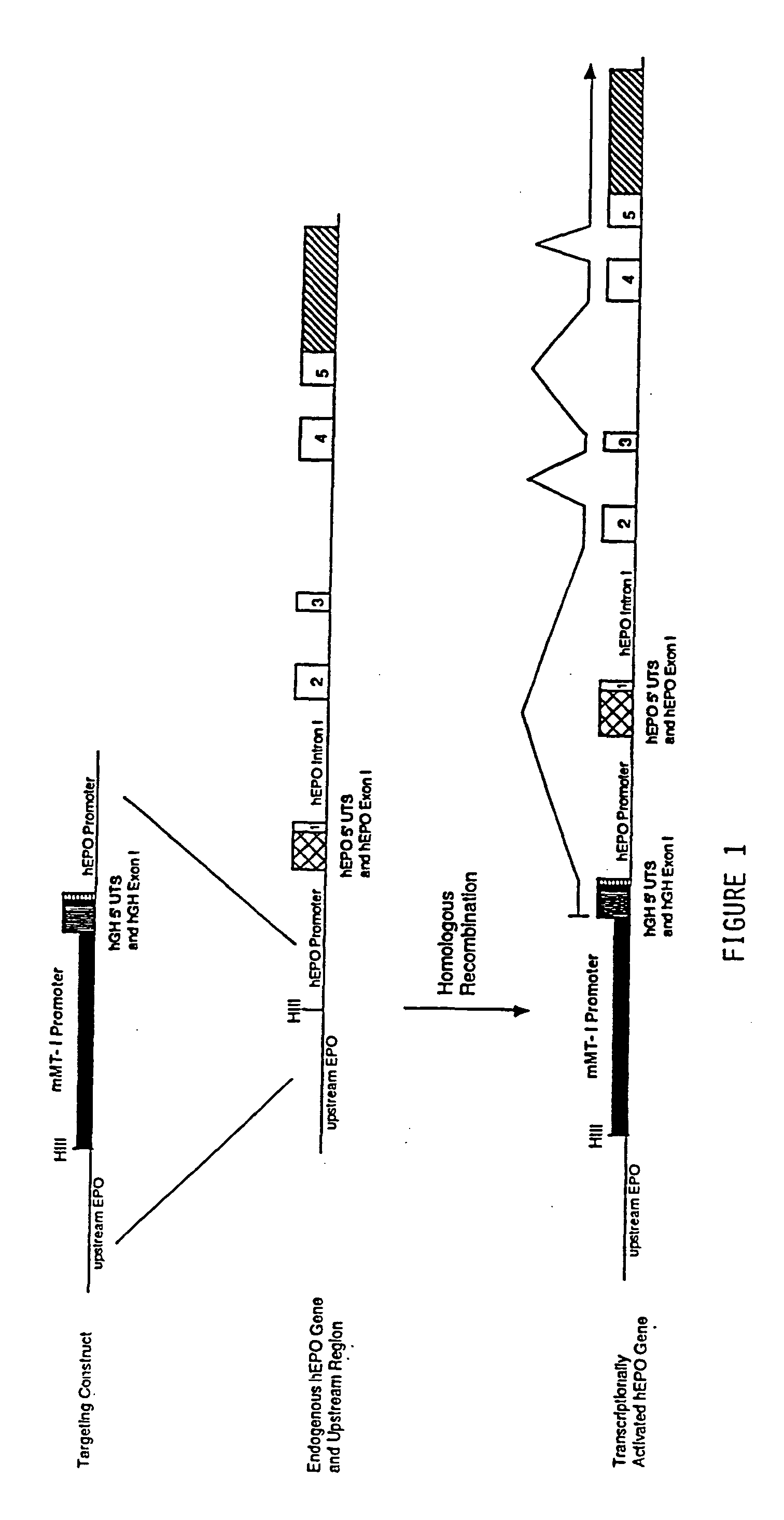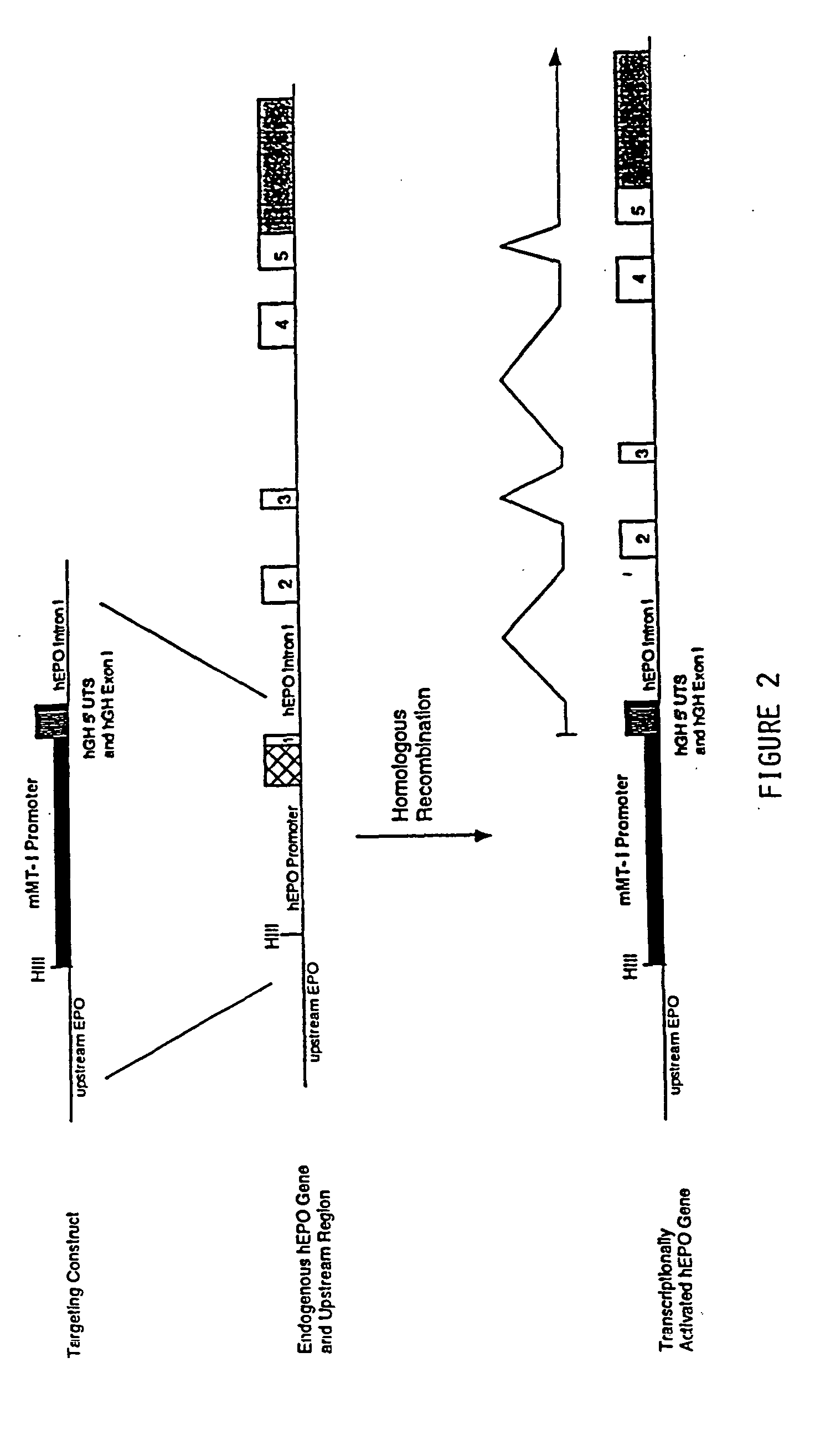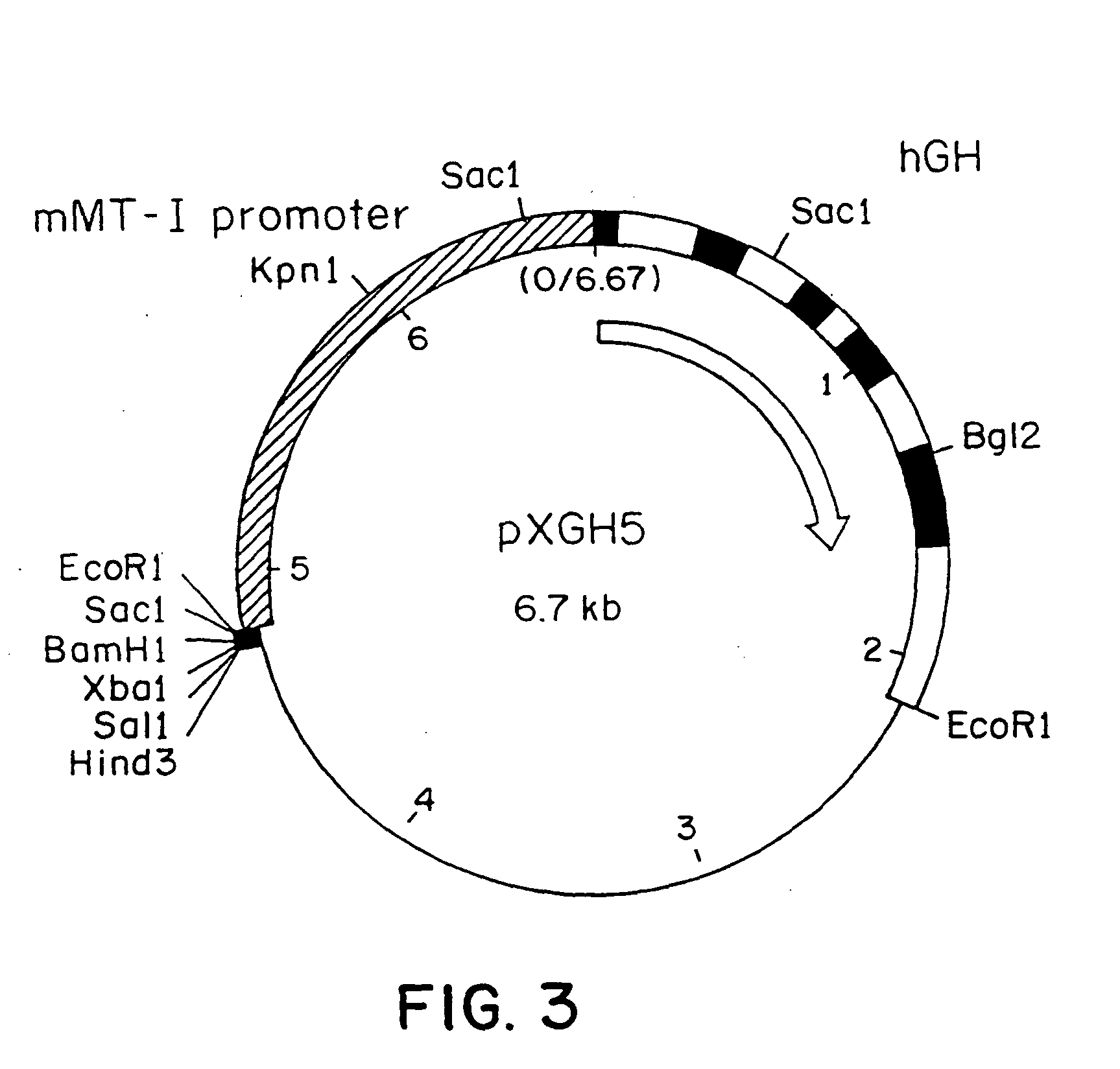DNA construct for effecting homologous recombination and uses thereof
a technology of dna constructs and constructs, which is applied in the field of dna constructs for affecting homologous recombination, can solve the problems of limited cloning capacity of retroviruses, restricting therapeutic applicability, and increasing the risk of tumorigenic insertion events, so as to achieve a wider range of genes, increase the flexibility of the placement of the construct, and improve the effect of cloning capacity
- Summary
- Abstract
- Description
- Claims
- Application Information
AI Technical Summary
Problems solved by technology
Method used
Image
Examples
example 1
Production of Transfected Cell Strains by Gene Targeting
[0105] Gene targeting occurs when transfecting DNA either integrates into or partially replaces chromosomal DNA sequences through a homologous recombinant event. While such events can occur in the course of any given transfection experiment, they are usually masked by a vast excess of events in which plasmid DNA integrates by nonhomologous, or illegitimate, recombination.
a. Generation of a Construct Useful for Selection of Gene Targeting Events in Human Cells
[0106] One approach to selecting the targeted events is by genetic selection for the loss of a gene function due to the integration of transfecting DNA. The human HPRT locus encodes the enzyme hypoxanthine-phosphoribosyl transferase. hprt− cells can be selected for by growth in medium containing the nucleoside analog 6-thioguanine (6-TG): cells with the wild-type (HPRT+) allele are killed by 6-TG, while cells with mutant (hprt−) alleles can survive. Cells harboring targ...
example 2
Construction of Targeting Plasmids which Result in Chimeric Transcription Units in which Human Growth Hormone and Erythropoietin Sequences are Fused
[0152] The following serves to illustrate two further embodiments of the present invention, in which the normal regulatory sequences upstream of the human EPO gene are altered to allow expression of hEPO in primary or secondary fibroblast strains which do not express hEPO in detectable quantities in their untransfected state as obtained. In these embodiments, the products of the targeting events are chimeric transcription units in which the first exon of the human growth hormone gene is positioned upstream of hEPO exons 2-5. The product of transcription, splicing and translation is a protein in which amino acids 1-4 of the hEPO signal peptide are replaced with amino acid residues 1-3 of hGH. The two embodiments differ with respect to both the relative positions of the foreign regulatory sequences that are inserted and the specific patte...
example 3
Targeted Modification of Sequences Upstream and Amplification of the Targeted Gene
[0165] Human cells in which the hEPO gene has been activated by the methods previously described can be induced to amplify the neo / mMT-1 / EPO transcription unit if the targeting plasmid contains a marker gene that can confer resistance to a high level of a cytotoxic agent by the phenomenon of gene amplification. Selectable marker genes such as dihydrofolate reductase (dhfr, selective agent is methotrexate), the multifunctional CAD gene [encoding carbamyl phosphate synthase, aspartate transcarbamylase, and dihydro-orotase; selective agent is N-(phosphonoacetyl)-L-aspartate (PALA)], glutamine synthetase; selective agent is methionine sulphoximine (MSX), and adenosine deaminase (ada; selective agent is an adenine nucleoside), have been documented, among other genes, to be amplifiable in immortalized human cell lines (Wright, J. A. et al. Proc. Natl. Acad. Sci. USA 87: 1791-1795 (1990); Cockett, M. I. et a...
PUM
| Property | Measurement | Unit |
|---|---|---|
| concentration | aaaaa | aaaaa |
| diameter | aaaaa | aaaaa |
| concentration | aaaaa | aaaaa |
Abstract
Description
Claims
Application Information
 Login to View More
Login to View More - R&D
- Intellectual Property
- Life Sciences
- Materials
- Tech Scout
- Unparalleled Data Quality
- Higher Quality Content
- 60% Fewer Hallucinations
Browse by: Latest US Patents, China's latest patents, Technical Efficacy Thesaurus, Application Domain, Technology Topic, Popular Technical Reports.
© 2025 PatSnap. All rights reserved.Legal|Privacy policy|Modern Slavery Act Transparency Statement|Sitemap|About US| Contact US: help@patsnap.com



